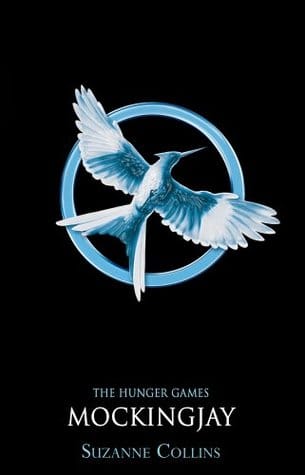Mockingjay: A Deep Dive into Suzanne Collins' Dystopian Finale
An in-depth 800-word exploration of Mockingjay, covering plot, themes, characters, and its lasting influence on YA dystopian fiction.

Introduction
When Suzanne Collins released "Mockingjay" in 2010, the novel instantly became a cultural touchstone, concluding the wildly popular Hunger Games trilogy with a mix of political intrigue, raw emotion, and relentless action. More than a page-turning thriller, the book challenges readers to think critically about propaganda, personal agency, and the high cost of war. Whether you are revisiting Panem or discovering it for the first time, understanding why "Mockingjay" resonates with millions is key to appreciating its enduring legacy in young-adult fiction.
Plot Overview
The story opens in the smoldering ruins of District 12, where Katniss Everdeen grapples with the trauma of two Hunger Games and the dawning reality of full-scale rebellion. She is whisked away to the underground stronghold of District 13, a supposedly obliterated district that has been secretly preparing to topple the Capitol for decades. There, leaders such as President Coin and strategist Plutarch Heavensbee pressure Katniss to become the "Mockingjay," a living symbol meant to unify the districts against President Snow’s tyranny.
Katniss reluctantly accepts the role, but her primary motivation remains painfully personal: rescuing Peeta Mellark, who has been captured and psychologically "hijacked" by the Capitol. As propaganda battles rage over the airwaves, Katniss and a tactical film crew embark on missions across war-torn districts, forging alliances while exposing the Capitol’s atrocities. The climax arrives when Katniss infiltrates the Capitol’s booby-trapped streets, leading to a final confrontation that upends every assumption about friend, foe, and the true nature of power.
Major Themes
At its core, "Mockingjay" is a meditation on the moral ambiguities of war. Collins refuses to paint either side as entirely righteous, illustrating how even the rebel leadership manipulates imagery, edits footage, and sacrifices lives for strategic advantage. Katniss, positioned as the face of hope, is simultaneously a pawn on a political chessboard. This tension spotlights the theme of agency: How much control do we truly have over our identities when larger systems seek to weaponize them? The novel also underscores the cyclical nature of violence, asking whether a war fought in the name of justice can avoid becoming the very horror it aims to destroy.
Character Development
Katniss’s evolution from reluctant volunteer to disillusioned rebel marks one of the most compelling arcs in contemporary YA literature. In "Mockingjay," her trauma is palpable; flashbacks, panic attacks, and survivor’s guilt ground her in harsh realism rarely seen in blockbuster franchises. Peeta’s transformation is no less dramatic. His hijacked memories convert him from Katniss’s moral compass into a potential assassin, emphasizing the novel’s examination of identity manipulation. Gale Hawthorne, meanwhile, morphs from a freedom-loving hunter into a hardened soldier who accepts collateral damage as a necessary evil, forcing readers to question where the line between hero and villain truly lies.
Symbolism and Imagery
The mockingjay bird itself encapsulates the trilogy’s central paradox: born from the Capitol’s bio-engineered jabberjay but ultimately escaping its control, it stands for unintended consequences and rebel ingenuity. In "Mockingjay," the symbol matures alongside Katniss. Her black wings-inspired armor, designed by Cinna, blurs the boundary between fashion and warfare, making each televised appearance a calculated act of resistance. Fire, ever present since "Girl on Fire" was coined, shifts from glamorous spectacle to a destructive yet purifying force, mirroring the rebellion’s dual capacity to save and scorch.
Cultural Impact and Legacy
Beyond bestselling charts, "Mockingjay" reshaped how mainstream audiences perceive young-adult fiction. Its frank portrayal of post-traumatic stress paved the way for more nuanced mental-health narratives in the genre. The novel also sparked academic discussions on media literacy; teachers and scholars use it to dissect propaganda techniques, making it a staple in classrooms worldwide. Film adaptations amplified the book’s reach, with Jennifer Lawrence’s gritty performance as Katniss galvanizing conversations about female agency in blockbuster cinema.
Moreover, the political landscape of the 2010s—marked by social media activism and global protest movements—found eerie echoes in "Mockingjay’s" depiction of viral symbols and decentralized resistance. Protestors from Hong Kong to Minneapolis have adopted the three-finger salute as a gesture of defiance, proving that Collins’ fictional universe has spilled into real-world advocacy. The book’s influence even extends to marketing strategies; studios and brands now craft teasers that mimic "Mockingjay’s" in-universe propaganda, blurring fiction and reality in the attention economy.
Conclusion
More than a finale, "Mockingjay" is a cautionary tale about power, trauma, and narrative control. By refusing to offer tidy resolutions, Suzanne Collins invites readers to wrestle with uncomfortable truths: that revolutions can devour their heroes, that healing is nonlinear, and that vigilance against tyranny never ends. A decade on, the novel remains a touchstone for anyone interested in stories where entertainment meets urgent social commentary. Whether you read it for adrenaline or insight, "Mockingjay" ensures the conversation continues long after the last arrow is loosed.



